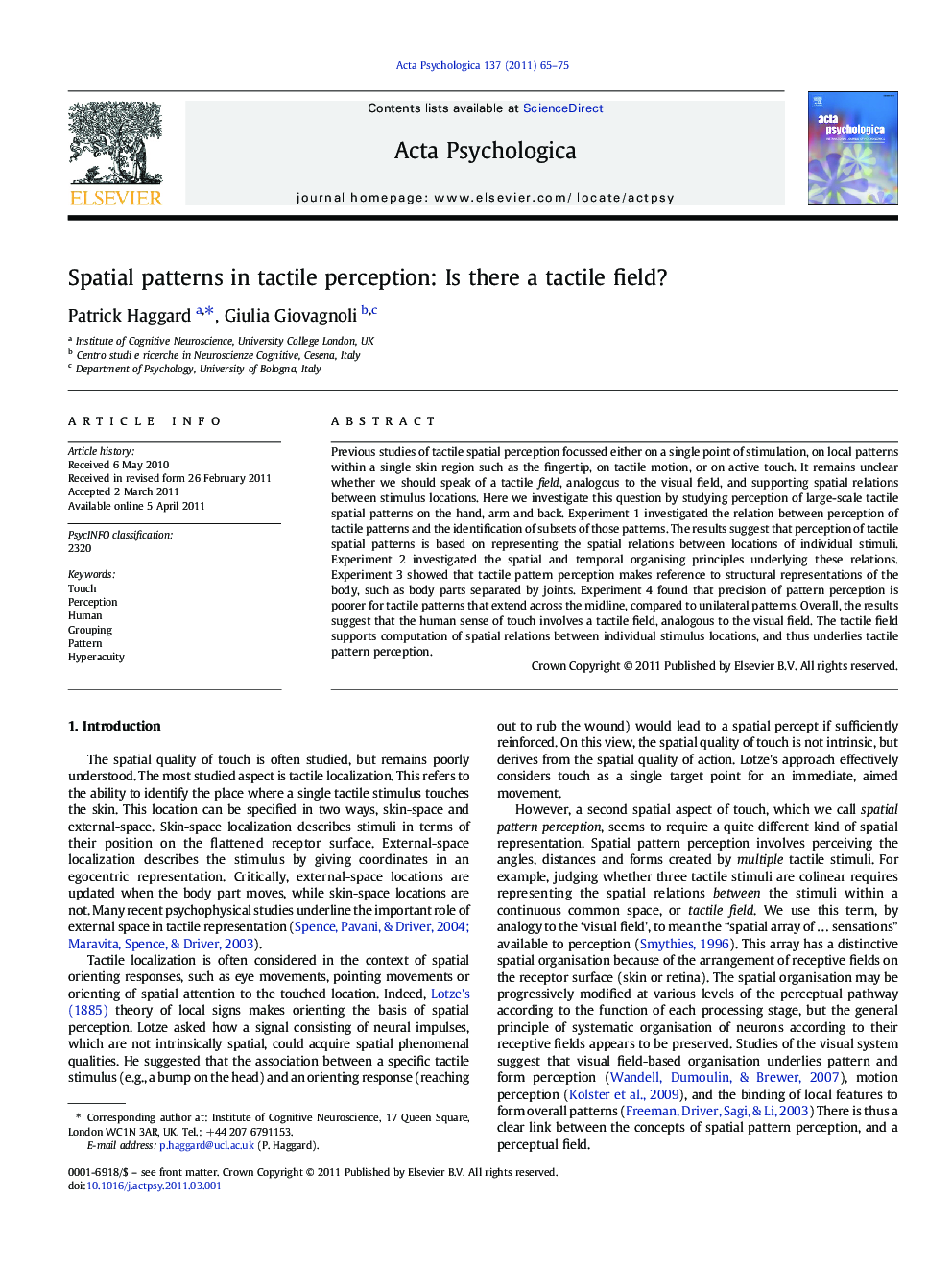| Article ID | Journal | Published Year | Pages | File Type |
|---|---|---|---|---|
| 920155 | Acta Psychologica | 2011 | 11 Pages |
Previous studies of tactile spatial perception focussed either on a single point of stimulation, on local patterns within a single skin region such as the fingertip, on tactile motion, or on active touch. It remains unclear whether we should speak of a tactile field, analogous to the visual field, and supporting spatial relations between stimulus locations. Here we investigate this question by studying perception of large-scale tactile spatial patterns on the hand, arm and back. Experiment 1 investigated the relation between perception of tactile patterns and the identification of subsets of those patterns. The results suggest that perception of tactile spatial patterns is based on representing the spatial relations between locations of individual stimuli. Experiment 2 investigated the spatial and temporal organising principles underlying these relations. Experiment 3 showed that tactile pattern perception makes reference to structural representations of the body, such as body parts separated by joints. Experiment 4 found that precision of pattern perception is poorer for tactile patterns that extend across the midline, compared to unilateral patterns. Overall, the results suggest that the human sense of touch involves a tactile field, analogous to the visual field. The tactile field supports computation of spatial relations between individual stimulus locations, and thus underlies tactile pattern perception.
Research Highlights► Individual touches are integrated over large skin areas to perceive spatial patterns. ► Tactile pattern perception improves with delays up to 800 ms between successive touches. ► Tactile perception is impaired when the pattern crosses the midline, or cross a joint.
